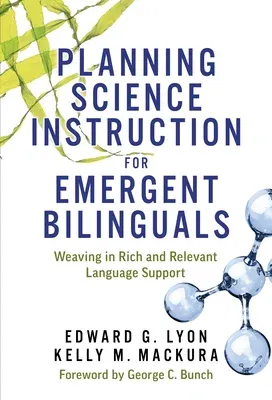This practical resource takes educators through a planning process--from
selecting standards to designing learning activities--that weaves
together language, literacy, and science in ways that are responsive to
emergent bilinguals. Drawing on extensive and current research, the
authors show how secondary educators can use students' own language and
lived experiences, coupled with authentic science practices, to provide
rich and relevant language support. Using a science unit as a shared
text, readers will learn how to gather rich knowledge about emergent
bilinguals, unpack the ideas and language demands of Next Generation
Science Standards, strategically embed language and literacy standards
in the curriculum, and sequence learning activities around an anchoring
phenomenon, a text, and an assessment. In the process, readers will come
away with a repertoire of planning tools and examples of how to support
emergent bilinguals in using language to collaborate with others and to
interpret and produce texts that are central to learning and doing
science. Planning Science Instruction for Emergent Bilinguals blends
theory and practice so readers understand both how and why this planning
process can be used to disrupt social inequity for emergent bilinguals.
Book Features:
- Describes intentional decisions that educators can make when planning
a science unit or learning experience.
- Shows how to weave together Next Generation Science Standards, Common
Core English Language Arts Standards, and language development.
- Provides a model unit about kelp forest ecosystems to illustrate how
theory is translated into practice.
- Demonstrates how to use emergent bilinguals' assets (linguistic
skills, family experiences, personal interests) to create engaging
science instruction.
- Provides a set of planning tools, including both blank templates and
completed examples, to guide educators through the planning process.

